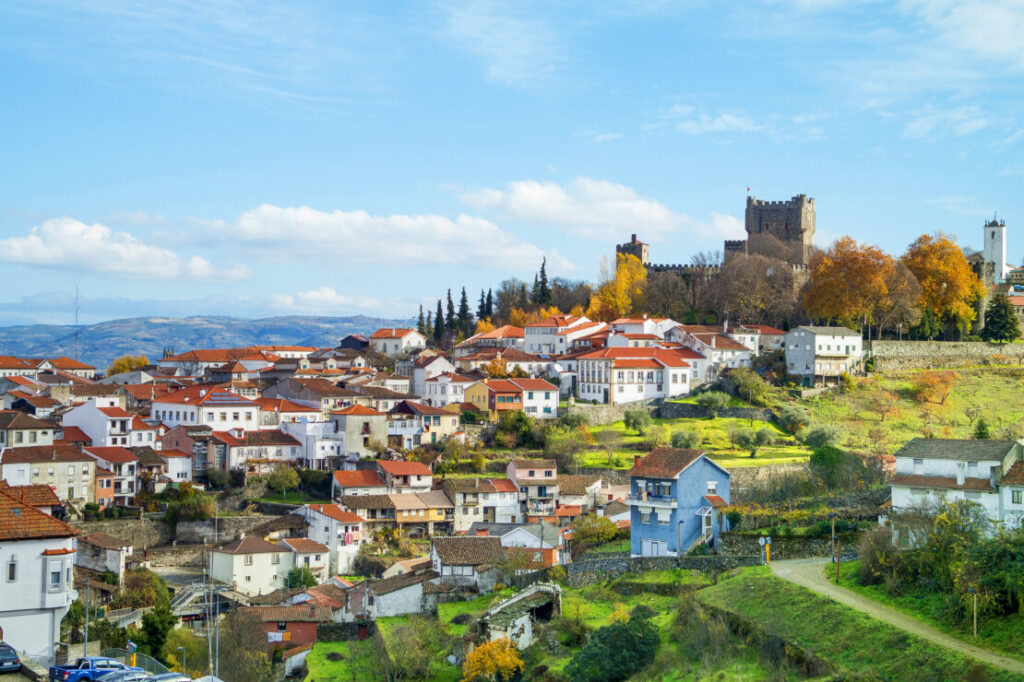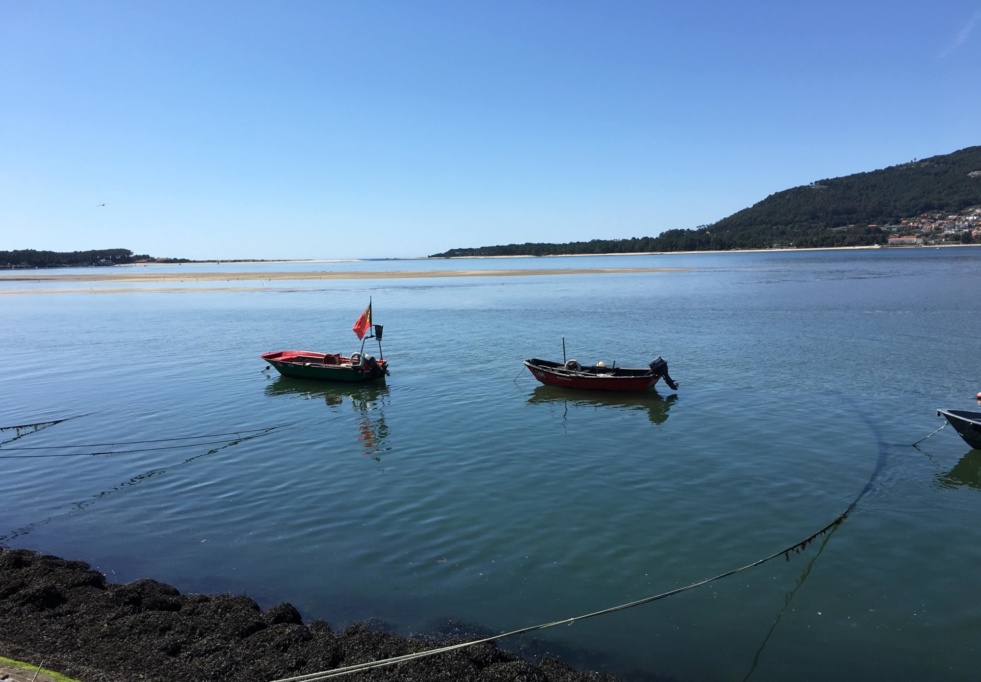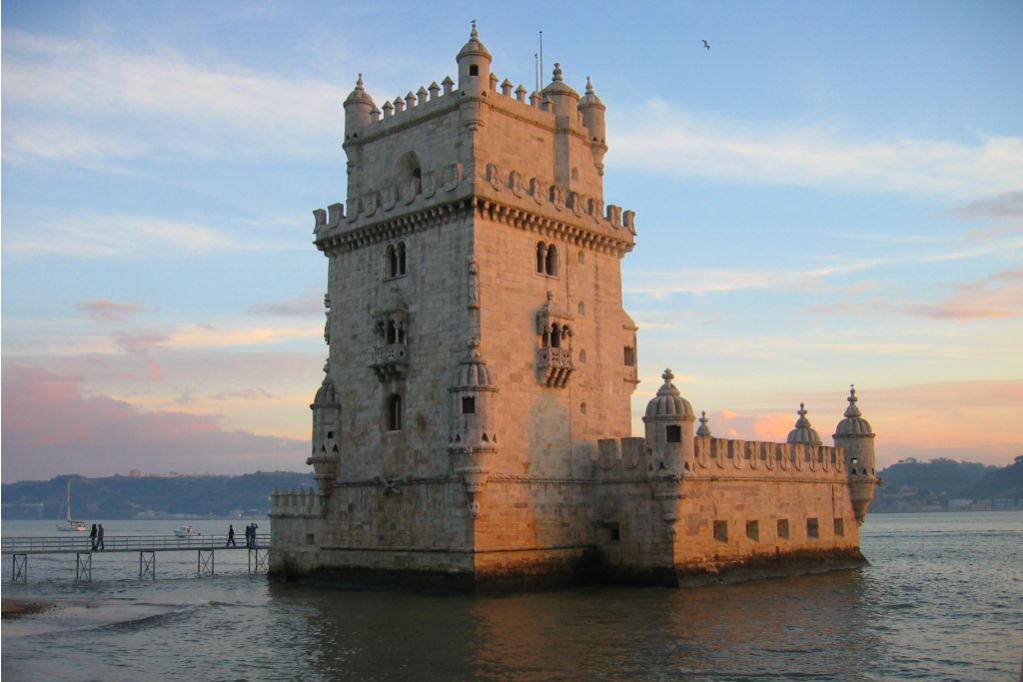PORTUGAL
THE ULTIMATE TRAVEL GUIDE
Discover the Essence of Portugal: Your Complete Travel Companion to Exquisite Beaches, Historic Cities, and Culinary Delights. Uncover the Rich Tapestry of Culture, Savor Authentic Flavors, and Immerse Yourself in Timeless Traditions. Let Our Guide Lead You Through an Unforgettable Journey Across the Beauty and Charm of Portugal.
Portugal Itineraries
Need To Know: How To Travel To Portugal
Portugal offers a perfect mix of stunning coastlines, historic landmarks, vibrant cities, and delicious cuisine. Explore medieval castles, charming villages, and world-class beaches. Experience its rich culture, famous wines, and warm hospitality. With mild weather year-round, Portugal is an ideal destination for adventurers, history buffs, and food lovers alike.
Whether you need a visa for Portugal depends on your nationality and the purpose of your visit. EU/EEA citizens don’t need a visa. Visitors from the US, UK, Canada, and Australia can stay visa-free for up to 90 days. Check Portugal’s visa requirements for your specific country before traveling.
The currency of Portugal is the Euro (€), which is used across most European Union countries. It replaced the Portuguese Escudo in 2002. Coins come in denominations of 1 cent to 2 euros, while banknotes range from €5 to €500. The Euro makes traveling within Europe convenient for tourists.
Portugal is one of Europe’s most affordable destinations, offering budget-friendly accommodations, delicious local cuisine, and reasonably priced attractions. Public transportation is efficient and economical, making it easy to explore cities and scenic countryside without overspending. Visitors can enjoy a high-quality experience without breaking the bank, making Portugal a fantastic value.
Portugal is one of the safest countries to travel to, known for its low crime rates and welcoming locals. Exercise standard precautions, especially in busy areas to avoid petty theft. From its serene countryside to vibrant cities, Portugal offers travelers a secure and enjoyable experience, making it a top European destination.
Yes, you can safely drink tap water in Portugal, as it meets EU standards. While locals often prefer bottled water for taste, tap water is clean and safe.
Portugal’s traditional food is rich and flavorful, with dishes like bacalhau (salt cod), caldo verde (kale soup), and cozido à portuguesa (hearty meat stew). Fresh seafood, such as grilled sardines and octopus, is a staple, while pastéis de nata (custard tarts) delight for dessert. Each region offers unique culinary treasures.
Need to Know
Why Travel to Portugal
Tip: Portugal offers historic cities, stunning coastlines, and vibrant culture.
Why: From Lisbon’s historic trams to the Algarve’s golden beaches, Portugal blends rich maritime heritage with Mediterranean charm and world-class cuisine.
How: Explore castles and museums (€3–15), enjoy local cuisine (€3–10), and book tours via Viator (€15–40) for guided experiences.
Do I Need a Visa
Tip: EU, US, and many nationalities get 90-day visa-free entry (Schengen). Others may need a visa (€60–80). Check requirements in advance.
Why: Ensures smooth entry and compliance with Schengen immigration rules.
How: Check via Portuguese embassy websites (€0). Carry digital passport copies on Google Drive (€0). Have proof of accommodation ready.
What is the Currency of Portugal
Tip: The currency is Euro (€). Budget travelers spend €40–80/day ($40–80).
Why: Euros are used for most transactions; cards are widely accepted in cities and tourist areas.
How: Exchange at banks (€0) or use ATMs (€1–3 fee). Carry small Euro notes (€5–20). Use Revolut (€0 fees) for better rates.
Is Portugal Cheap to Visit
Tip: Portugal is affordable, with meals (€3–10), hostels (€15–40/night), and transport (€2–10) at moderate costs, especially outside Lisbon.
Why: Budget-friendly options in smaller cities and coastal areas suit cost-conscious travelers.
How: Stay in hostels (€15–40). Eat at tascas (€3–8). Book via Booking.com (€0) for deals.
Can I Drink the Tap Water
Tip: Tap water is safe across Portugal, but bottled water (€0.50–2) is common in restaurants.
Why: High-quality tap water ensures safety, but cultural norms favor bottled water in dining settings.
How: Carry a reusable bottle (€5–15) for tap water. Buy bottled water from shops (€0.50–2) if preferred. Check seals on bottles.
Can I Buy a SIM Card
Tip: Purchase a local SIM card for data and calls (€10–20).
Why: Affordable data plans ensure connectivity for navigation and communication.
How: Buy SIMs at airports or shops (€10–20). Top up via mobile apps (€0). Choose providers like MEO or Vodafone.
Enchanting Portugal Travel Guide: Your Gateway to Unforgettable Adventures
Welcome to the Enchanting Portugal Travel Guide, your essential companion for exploring a European gem. Portugal captivates with its historic cities, golden coastlines, and vibrant culture, from Lisbon’s charming Alfama district to Madeira’s lush landscapes. This guide covers eight top destinations, cultural experiences, and practical tips to ensure a seamless and unforgettable journey. Whether you’re exploring Porto’s wine cellars or surfing in Lagos, let this guide inspire your Portuguese adventure.
How to Get to Portugal
Travel Options
Tip: Fly into Lisbon (LIS) or Porto (OPO) (€600–1400 from North America, €50–200 from Europe). Trains connect from Spain (€20–50).
Why: Lisbon and Porto are main gateways with excellent regional connections to Iberia.
How: Compare flights on Skyscanner (€0). Take trains from Madrid (€20–50) or buses from Seville (€15–30). Use trains (€5–20) or buses (€3–10) within Portugal.
Best Time to Visit Portugal
Optimal Seasons
Tip: Visit in spring (April–June) or autumn (September–October) for mild weather (15–25°C). Summer (July–August) is warm (25–35°C), ideal for beaches. Winter (December–February) suits city exploration (10–15°C).
Why: Spring and autumn offer pleasant weather and fewer crowds; summer is best for coastal areas.
How: Book accommodations early for summer (€20–100/night). Pack light clothing and sunscreen. Check forecasts via IPMA.pt (€0).
Top Destinations in Portugal
Lisbon
Tip: Visit Belém Tower (€6–8), explore Alfama (€0), and ride Tram 28 (€3). Take a Tagus River cruise (€15–25) or try pastéis de nata (€1–2).
Why: Lisbon, Portugal’s vibrant capital, blends historic charm with coastal beauty. Belém Tower and Alfama’s narrow streets showcase its maritime and Moorish heritage, while Tram 28 offers a nostalgic ride through the city’s hilly heart.
How: Use Lisbon’s metro or trams (€1.50–3). Book tower tickets online (€0 fees) or tours via Viator (€15–40). Wear comfortable shoes for Alfama’s hills and visit in spring for mild weather.
Porto
Tip: Visit Ribeira District (€0), explore Livraria Lello (€8), and tour a port wine cellar (€15–25). Try francesinha (€6–10) or take a Douro River cruise (€12–20).
Why: Porto, a UNESCO-listed city, is famed for its colorful Ribeira waterfront and port wine heritage. Livraria Lello’s stunning bookstore and the Douro River’s scenic beauty add literary and natural charm to this northern gem.
How: Take trains from Lisbon (€20–40, 3 hours). Stay in guesthouses (€20–60/night). Book tours via GetYourGuide (€10–30), try bacalhau at local tascas (€5–10), and visit in autumn for wine harvest season.
Algarve
Tip: Relax on Praia da Marinha (€0), visit Faro’s Old Town (€0), and explore Benagil Cave (€20–40). Try cataplana (€8–15) or join a boat tour (€15–30).
Why: The Algarve, Portugal’s southern coast, boasts golden beaches and dramatic cliffs. Praia da Marinha’s turquoise waters and Benagil Cave’s natural wonder offer stunning beauty, while Faro’s historic charm adds cultural depth.
How: Take buses from Lisbon (€15–25, 4 hours). Stay in hotels (€30–80/night). Book tours via Klook (€15–30), pack sunscreen for beach days, and visit in summer for ideal beach weather.
Sintra
Tip: Visit Pena Palace (€14–20), explore Quinta da Regaleira (€10), and stroll Moorish Castle (€8). Try queijadas (€1–2) or join a guided tour (€15–30).
Why: Sintra, a UNESCO-listed town, is a fairytale escape with colorful palaces and lush gardens. Pena Palace’s romantic architecture and Quinta da Regaleira’s mystical grounds make it a magical destination near Lisbon.
How: Take trains from Lisbon (€2–5, 40 minutes). Stay in guesthouses (€20–60/night). Book tours via Viator (€15–30), wear comfortable shoes for hilly paths, and visit in spring for blooming gardens.
Coimbra
Tip: Visit the University of Coimbra (€12–15), explore Joanina Library (€8), and stroll Mondego River (€0). Try chanfana (€6–10) or join a fado tour (€10–20).
Why: Coimbra, Portugal’s historic university city, blends medieval charm with academic prestige. The Joanina Library’s Baroque beauty and vibrant fado music scene offer a unique cultural experience in the heart of Portugal.
How: Take trains from Lisbon (€15–25, 2 hours). Stay in hotels (€20–60/night). Book tours via GetYourGuide (€10–20), try leitão at local restaurants (€5–10), and visit in summer for student festivals.
Évora
Tip: Visit the Temple of Diana (€0), explore the Chapel of Bones (€5), and stroll Giraldo Square (€0). Try carne de porco à alentejana (€6–10) or join a wine tour (€15–30).
Why: Évora, a UNESCO-listed city in Alentejo, boasts Roman and medieval heritage. The Temple of Diana and eerie Chapel of Bones offer historical intrigue, while the region’s wines and cuisine add rustic charm.
How: Take buses from Lisbon (€10–15, 2 hours). Stay in guesthouses (€20–50/night). Book tours via Klook (€15–30), wear comfortable shoes for cobblestones, and visit in autumn for harvest season.
Madeira
Tip: Hike Pico do Arieiro (€0), visit Funchal’s Market (€0), and explore Cabo Girão (€0). Try espada fish (€6–12) or join a levada walk (€15–30).
Why: Madeira, a lush island, offers dramatic cliffs and subtropical landscapes. Funchal’s vibrant market and levada trails showcase its natural beauty, while Cabo Girão’s glass platform provides breathtaking ocean views.
How: Fly from Lisbon (€50–150, 2 hours). Stay in hotels (€30–80/night). Book tours via Viator (€15–30), bring hiking boots for trails, and visit in spring for blooming flowers.
Lagos
Tip: Relax on Praia Dona Ana (€0), visit Ponta da Piedade (€0), and explore the Old Town (€0). Try surfing (€20–40) or grilled sardines (€5–10).
Why: Lagos, a charming Algarve town, boasts golden beaches and dramatic cliffs. Ponta da Piedade’s rock formations and the historic Old Town offer a mix of natural beauty and vibrant coastal culture, perfect for relaxation and adventure.
How: Take buses from Lisbon (€15–25, 4 hours). Stay in guesthouses (€20–60/night). Book tours via GetYourGuide (€15–40), pack sunscreen for beach days, and visit in summer for surfing and festivals.
Cultural Experiences and Tips
Portuguese Cuisine
Tip: Try pastéis de nata (€1–2), bacalhau (€5–10), or cataplana (€8–15) at local tascas. Sip Vinho Verde (€3–6).
Why: Portugal’s cuisine blends fresh seafood and hearty dishes with its maritime heritage.
How: Dine at Lisbon’s Alfama tascas or Porto’s Ribeira restaurants. Book cooking classes via Viator (€20–50). Pair with local port wine (€3–8).
Cultural Festivals and Crafts
Tip: Attend Lisbon’s Santo António Festival (June, €0–20) or visit azulejo workshops in Porto (€10–20).
Why: Festivals and crafts showcase Portugal’s vibrant maritime and artistic traditions.
How: Check schedules on VisitPortugal.com (€0). Book cultural tours via GetYourGuide (€15–30). Bargain respectfully at markets.
Music and Dance
Tip: Enjoy fado music in Coimbra (€10–20) or folk dances at Algarve festivals (€0–10).
Why: Portugal’s music and dance reflect its soulful and festive traditions.
How: Book tickets via Ticketline.pt (€0). Visit venues like Lisbon’s Casa do Fado. Dress smartly for fado performances.
Practical Tips for Traveling in Portugal
Visa and Documentation
Tip: Ensure your passport is valid for 6 months. Many nationalities get 90-day visa-free entry (Schengen); others need a visa (€60–80).
Why: Simplifies entry and ensures compliance with Schengen rules.
How: Check via Portuguese embassy websites (€0). Carry digital copies on Google Drive (€0). Have proof of accommodation ready.
Currency and Payments
Tip: Use Euros (€40–80/day). Cards are widely accepted; cash is useful for small vendors and rural areas.
Why: Small tascas and markets often prefer cash payments.
How: Use ATMs in Lisbon (€1–3 fee). Carry small Euro notes (€5–20). Use Revolut (€0 fees) for better rates.
Language and Communication
Tip: Learn phrases like “olá” (hello) or “obrigado” (thank you). English is common in tourist areas but limited elsewhere.
Why: Basic Portuguese enhances interactions and shows respect.
How: Use Google Translate (€0) for offline use. Purchase a local SIM card (€10–20) for data.
Safety and Dangers in Portugal
Tip: Portugal is safe, but beware of pickpocketing in Lisbon’s trams or Algarve’s tourist areas. Be cautious on coastal cliffs.
Why: Low crime rates, but tourist areas and trails require vigilance.
How: Use a money belt (€10–20). Check travel advisories (US State Department, €0). Stay hydrated on hikes (€0.50–2).
More Safety Tips for EuropeAccommodation Options
Tip: Choose hotels in Lisbon (€40–120/night), hostels in Porto (€15–40/night), or guesthouses in Algarve (€20–60/night).
Why: Diverse options suit budgets, from urban hotels to coastal guesthouses.
How: Book via Booking.com or Airbnb (€0). Opt for central or seaside locations. Check reviews for authenticity.
Transportation
Tip: Use trains (€5–20), buses (€3–10), or rent cars (€20–50/day). Walking is viable in city centers.
Why: Efficient transport options suit both urban and rural exploration.
How: Book trains via CP.pt (€0). Use Rede Expressos for buses (€0) or rent cars via Rentalcars.com (€0). Carry small cash for fares.
Why This Portugal Travel Guide is Essential
Your Gateway to Unforgettable Adventures
Tip: Use this guide to explore Portugal’s cultural treasures, stay safe, and immerse in local traditions.
Why: Portugal’s blend of history, cuisine, and coastlines requires informed planning.
How: Follow tips for Lisbon, Porto, and more. Enjoy pastéis de nata (€1–2) and fado performances (€10–20). Use apps like CP.pt (€0) for seamless travel.



